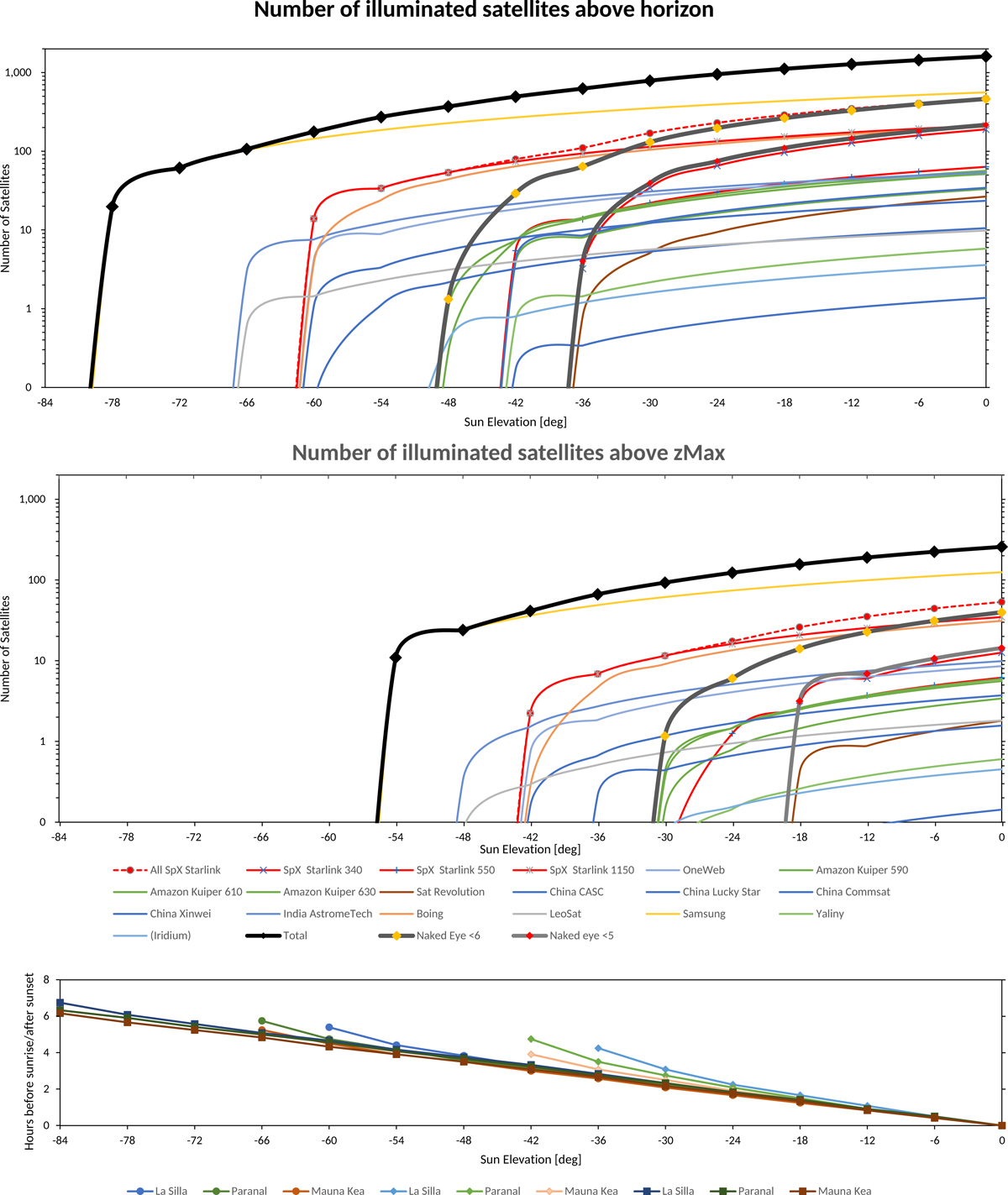Fig. 7.

Number of satellites in range (top panel: above the horizon, or middle panel: above zenithal distance z = 60° or elevation e > 30°) and illuminated by the Sun, as a function of the Sun’s elevation. The individual constellations are represented, as well as the whole of the SpaceX constellations (dotted red line), and the grand total of all considered constellations (thick black line). The number of satellites visible to the naked eye is also indicated (mag brighter than 6, thick grey line with yellow symbols, or mag brighter than 5, thick grey line with red symbols). The number of satellites visible with the naked eye is around 100 at the beginning and end of the astronomical night, an order of magnitude less are visible above 30° elevation, and this number plummets when the Sun drops below 50°. Only some observations are possible for sun elevations > − 18° (astronomical twilight), even fewer observation types (and shorter ones) are possible for > − 12° (nautical twilight), and virtually none for > − 6° (civil twilight). Bottom panel: number of hours before and after sunrise and sunset corresponding to the sun altitude, for three observatories, for both solstices and an equinox.
Current usage metrics show cumulative count of Article Views (full-text article views including HTML views, PDF and ePub downloads, according to the available data) and Abstracts Views on Vision4Press platform.
Data correspond to usage on the plateform after 2015. The current usage metrics is available 48-96 hours after online publication and is updated daily on week days.
Initial download of the metrics may take a while.


